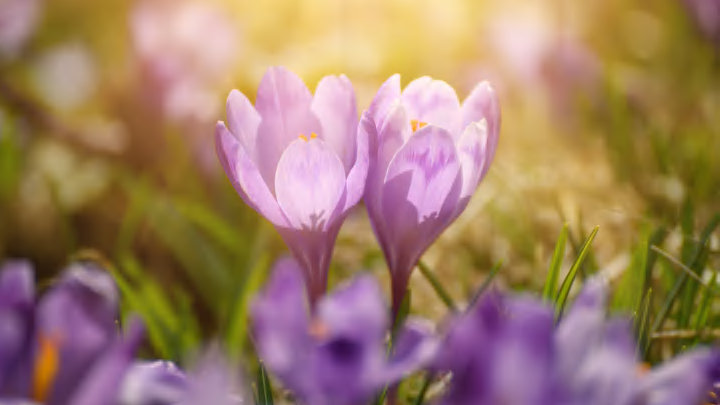Spring starts on March 20, 2025, which means that warmer weather and longer days are just around the corner. To celebrate the spring equinox, here are key facts about the event.
- The spring equinox arrives at 5:01 a.m. Eastern time in 2025.
- The equinox isn’t the only time you can balance an egg.
- Not every place gets equal night and day.
- The word equinox means “equal night.”
- In 2025, spring is arriving a little early.
The spring equinox arrives at 5:01 a.m. Eastern time in 2025.

The first day of spring is March 20, but the spring equinox will be here only for a brief time. At 5:01 a.m. Eastern time, the sun will be perfectly in line with the equator, resulting in both the Northern and Southern Hemispheres receiving equal amounts of sunlight throughout the day. After the vernal equinox has passed, days will start to become shorter for the Southern Hemisphere and longer up north.
The equinox isn’t the only time you can balance an egg.

You may have heard the myth that you can balance an egg on its end during the vernal equinox, and you may have even tried the experiment in school. The idea is that the extra gravitational pull from the sun when it’s over the equator helps the egg stand up straight. While it is possible to balance an egg, the trick has nothing to do with the equinox: You can make an egg stand on its end by setting it on a rough surface any day of the year.
Not every place gets equal night and day.

The equal night and day split between the Northern and Southern Hemispheres isn’t distributed evenly across all parts of the world. Though every region gets approximately 12 hours of sunlight the day of the vernal equinox, some places get a little more (the day is about 12 hours and 15 minutes in Fairbanks, Alaska), and some get less.
The word equinox means “equal night.”

The word equinox literally translates to “equal” (“equi-”) and “night” (“nox”) in Latin. The term vernal means “new and fresh,” and comes from the Latin word vernus for “of spring.”
In 2025, spring is arriving a little early.

If March 20 seems a little early for the first day of spring, you’re right. Typically, March 21 has marked the first day of spring (though it arrived on March 20 in 2019 and 2023 as well). According to The Farmers’ Almanac, there are several factors that can affect the date of spring’s arrival, and a cranky groundhog is not one of them. Variables include the number of days in a year, a change in orientation in the Earth’s elliptical orbit, and the pull of gravity from the other planets.
Discover More Spring Stories:
A version of this snow ran in 2020; it has been updated for 2025.
